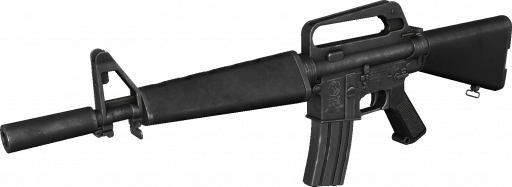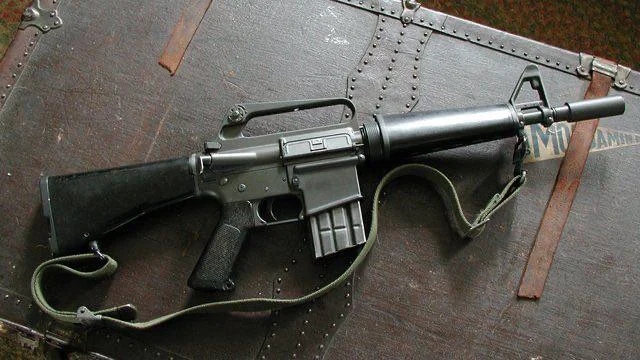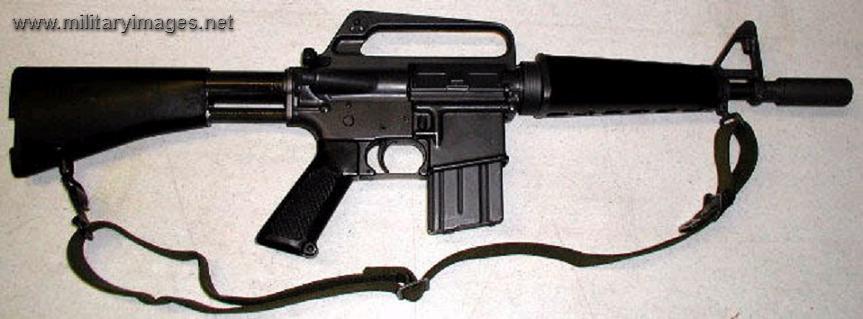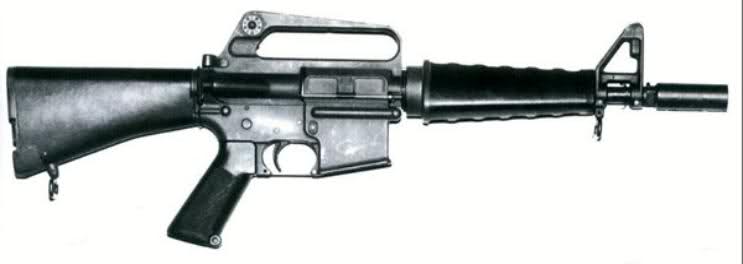XM607
| Factions | Weapon | Icon | Classes | Ammo |
|---|---|---|---|---|
 US |
 XM607 |
 |
30+1 / 90 |
| Damage Base | Headshot × | Chest × | Stomach × | Leg × | Arm × | Bayonet | Rifle Grenades | Reload Speed | |
|---|---|---|---|---|---|---|---|---|---|
| Partial | Empty | ||||||||
| 35 | ×2.5 = 87.5 | ×1.2 = 42 | ×1.15 = 40.25 | ×0.8 = 28 | ×0.75 = 26.25 | NO | NO | 2.366 Seconds | 3.166 Seconds |
| Designation | Weapon Type | Fire Modes | Fire Rate | Bullet Spread ° | Range Modifier | Muzzle Velocity | Projectile weight | Weight |
|---|---|---|---|---|---|---|---|---|
| XM607 | Carbine | Auto+Semi | 750 RPM | 7.77° & 1.62° ADS | 0.935 | 810 m/s | 12.3 g (190 gr) | 2.43 kg (5.35 lbs) |
| Full name | Caliber | Place of Origin | Date | Manufacturer | Barrel Length | Total Length | Weapon Script Name |
|---|---|---|---|---|---|---|---|
| CAR-15 Model 607 | 5.56mm | USA | 1965 | Colt | 13.5 in (343 mm) | 32.5 in (830 mm) | weapon_m607 |
HISTORY
In late 1959, Colt introduced a Tanker Model of the AR-15. It was the first AR-15 made with a retractable buttstock, with its overall length being only 26 inches (660 mm) with the buttstock retracted. The retractable buttstock resembled a shortened version of the fixed buttstock, but a two-position latch recessed in the back allowed it to be extended and locked into position, increasing the length of pull by 2.7 inches (69 mm). The barrel is too short to mount a bayonet, so the SMG had no bayonet lug. In 1965, Colt introduces the new Model 607 CAR-15 Submachine Gun (SMG), which is an improved version of the Colt Armalite AR-15 Tanker Model with some modifications from the M16. It was a compact weapon for use by special forces and vehicle crewmen. The dictionary definition of submachine gun is an automatic firearm that fires pistol-caliber cartridges. However, manufacturers such as Colt, Heckler & Koch, and Zastava Arms have referred to compact carbines as submachine guns, to emphasize their short length and to differentiate them from longer carbines.
About 50 CAR-15 SMGs were made. Most were issued to Navy SEALs and Army Special Forces, though some were also given to Army K-9 units. Since it never went into full production, CAR-15 SMGs were assembled from available spare parts. The first models were made with M16 receivers without forward assists and with shortened pistol grips from the Survival Rifle. The later Model 607A was made with XM16E1 receiver with forward assist and standard pistol grip. The handguard was made from full-length rifle handguard by cutting it in half and using either the fore or aft pair, after machining the ends to fit the slip ring and handguard cap.
Because of the short barrel, the CAR-15 SMGs suffered from a loud and bright muzzle blast, and a number of muzzle devices were developed to reduce this. The SMGs were initially fitted with the standard M16 rifle's "duckbill" or three-prong flash hiders, which did not alleviate the problem. In September 1966, Colt developed a 3.5-inch (89 mm) long moderator that lessened the noise and muzzle flash, which also increased the weapon's reliability by increasing the amount of back pressure. However, the moderator created its own problems, such as heavy bore fouling and causing tracer bullets to wildly yaw. A 4.25-inch (108 mm) long moderator with six slots and an expansion chamber, which further reduced noise and flash, replaced the previous muzzle device and became standard for the SMG and the Commando series, but fouling and tracer problems persisted.
SOURCE
-
Reproduction



